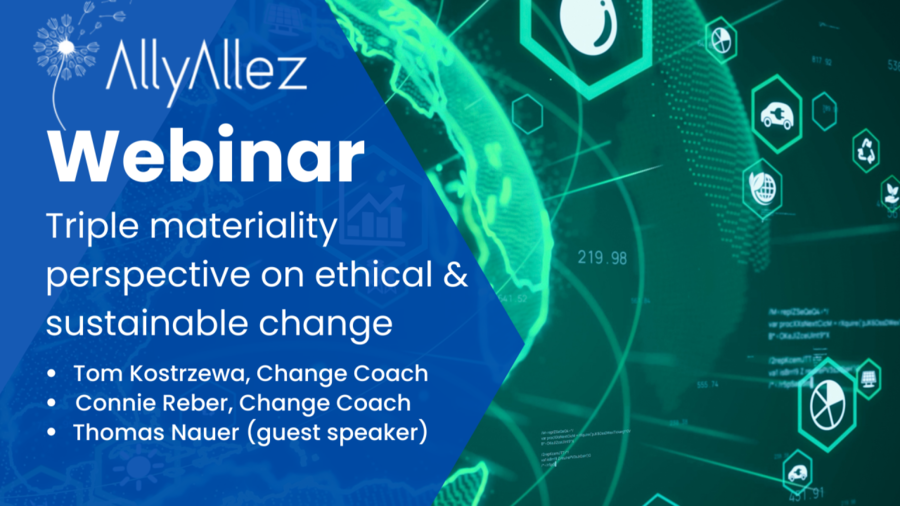Unlocking Future Success with Triple Materiality – Learn How Anticipating Customer Needs Drives Sustainable Innovation and Growth. Exclusive Insights in Our Upcoming Webinar and Complementary Whitepaper.
ZURICH, SWITZERLAND, December 16, 2023 /24-7PressRelease/ —
Triple Materiality: Gaining Competitive Advantage Through Customer-Centric Sustainability – A Shift in Perspective
The discourse on sustainability is currently dominated by the concept of double materiality. This involves extensive risk analysis, data collection, reporting, and compliance with ESG (Environmental, Social, and Governance) standards, significantly tying up internal corporate resources. The “Triple Materiality” framework, with its emphasis on “Future-Customer-Needs Materiality,” represents a paradigm shift. It prioritizes forward-looking innovation and emerging opportunities, enabling businesses to navigate and thrive in a rapidly evolving environment.
Future Perspectives
Triple Materiality expands the traditional understanding of double materiality by not only considering the internal and external effects of and on corporate activities but also by encouraging a focus on sustainable future opportunities and the broad-based transformation processes required for their realization. We invite companies to reflect on existing sustainability management practices and proactively prepare for future trends and future customer needs that will arise from society’s need to mitigate negative ecological and social impacts and risks, initiating transformation measures accordingly. The complexity and speed of change in the diverse and rapidly evolving facets of the “ESG/Sustainability” domain are often underestimated.
A Deluge of Data and a Storm of ESG Regulations
Currently, sustainability-related aspects are high on the corporate agenda. The list of focal points is long, ranging from climate change and biodiversity to circular economy, child labor, forced labor in supply chains, and many other social and ecological issues, necessitating extensive data collection, internal analysis, action plans, reporting, compliance, and more. This consumes enormous resources in terms of staffing and management attention, risking the neglect of important strategic and long-term issues.
Complexity Requires Participation and Coalition Building
The experiences and expertise of people within a company regarding markets, products, and processes, both internal and external, are valuable and urgently needed at the table when developing a solid understanding of sustainability with a future-oriented strategy. Participation leads to acceptance and the effective use of existing collective intelligence. Ideally, the jointly developed strategic vision is combined with consistent, broad-based implementation capabilities.
Sustainable Transformation – How Does It Work in Practice?
A method that has proven effective in our experience is to visualize what is going on in the minds of decision-makers and stakeholders. This is achieved on a jointly developed “map”. We call this step “the coloring phase” as part of a moderated transformation process tailored to the involved functions and employees. Once the different perspectives are clearly defined, digested and approved by all, they are analyzed to determine if there are desired or undesired impacts on the company and its sustainability strategy. This approach actively involves the extended management team and specialists, offering many advantages: Visualization allows for a detailed yet swift grasp of complex organizational situations. The map facilitates understanding of the overall situation of an organization. It is not only an analytical tool but also serves as a basis for communication and solution finding. It supports those responsible to promptly begin strategic planning and review operational options.
Conclusion
The expanded concept of Triple Materiality encourages, despite the current deluge of reporting obligations, ESG regulations, and compliance requirements, to look towards the future and anticipate key opportunities arising from societies and thus regulators need to address sustainability challenges. In today’s complex business landscape, the “Future-Customer-Needs Materiality” within Triple Materiality acts as a crucial North Star. This perspective guides companies to proactively anticipate and adapt to changing market trends and customer demands, ensuring long-term resilience and success in a dynamic environment.
Join us for the webinar and get the whitepaper for free
The change management market is currently experiencing significant growth, with companies needing to adapt to rapid technological, ecological, and social changes. The new circumstances call for new principles of leadership. In this context, Ethical Change Management becomes crucial. This approach emphasizes leadership grounded in values and integrity, where decisions and actions are not only driven by business objectives but also consider the well-being and respect of all stakeholders. Ethical leadership in change management involves transparent communication, inclusive decision-making, and a commitment to the fair treatment of all individuals impacted by change. It’s about leading not just with authority, but with empathy and a deep understanding of the diverse needs and perspectives within the organization.
More than just experts in guidance for sustainability frameworks, AllyAllez bring Ethical Change to your doorsteps. We don’t just consult; we provide actionable strategies tailored to fit your unique organizational culture and objectives. Our proprietary ‘One Map For Alignment’ approach ensures that sustainability is integrated into your organization’s DNA. AllyAllez – Gemeinsam Vorwärts. #triplemateriality #ethicalchange #allyallez
—
For the original version of this press release, please visit 24-7PressRelease.com here



